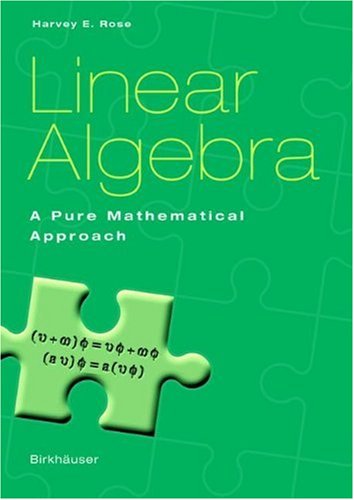

Most ebook files are in PDF format, so you can easily read them using various software such as Foxit Reader or directly on the Google Chrome browser.
Some ebook files are released by publishers in other formats such as .awz, .mobi, .epub, .fb2, etc. You may need to install specific software to read these formats on mobile/PC, such as Calibre.
Please read the tutorial at this link: https://ebookbell.com/faq
We offer FREE conversion to the popular formats you request; however, this may take some time. Therefore, right after payment, please email us, and we will try to provide the service as quickly as possible.
For some exceptional file formats or broken links (if any), please refrain from opening any disputes. Instead, email us first, and we will try to assist within a maximum of 6 hours.
EbookBell Team

5.0
88 reviews[from Preface]
"In algebra, an entity is called linear if it can be expressed in terms of addition, and multiplication by a scalar; a linear expression is a sum of scalar multiples of the entities under consideration. Also, an operation is called linear if it preserves addition, and multiplication by a scalar. For example, if A and B are 2 x 2 real matrices, v is a (row) vector in the real plane, and c is a real number, then v(A + B) = vA + vB and (cv)A = c(vA), that is, the process of applying a matrix to a vector is linear.
Linear Algebra is the study of properties and systems which preserve these two operations, and the following pages present the basic theory and results of this important branch of pure mathematics. There are many books on linear algebra in the bookshops and libraries of the world, so why write another? A number of excellent texts were written about fifty years ago (see the bibliography); in the intervening period the 'style' of mathematical presentation has changed. Also, some of the more modern texts have concentrated on applications both inside and outside mathematics. There is nothing wrong with this approach; these books serve a very useful purpose. But linear algebra contains some fine pure mathematics and so a modern text taking the pure mathematician's viewpoint was thought to be worthwhile."
The approach is pure-mathematical, and the intended readership is undergraduate mathematicians, also anyone who requires a more than basic understanding of the subject. This book will be most useful for a "second course" in linear algebra, that is for students that have seen some elementary matrix algebra. But as all terms are defined from scratch, the book can be used for a "first course" for more advanced students.